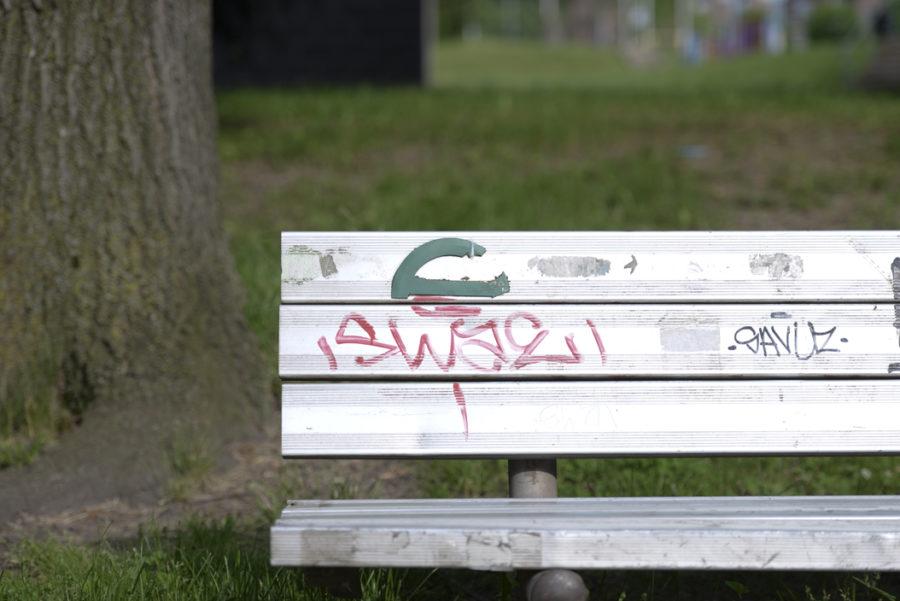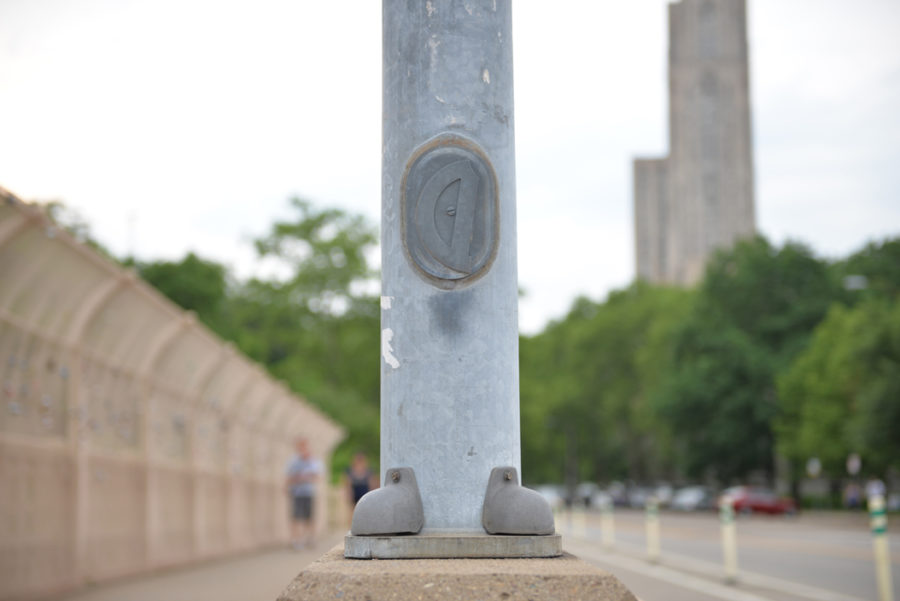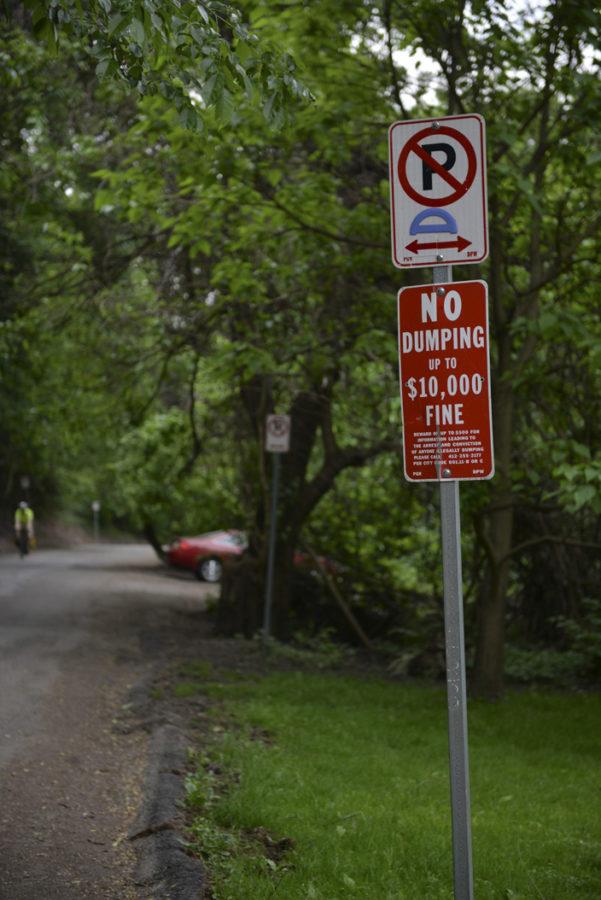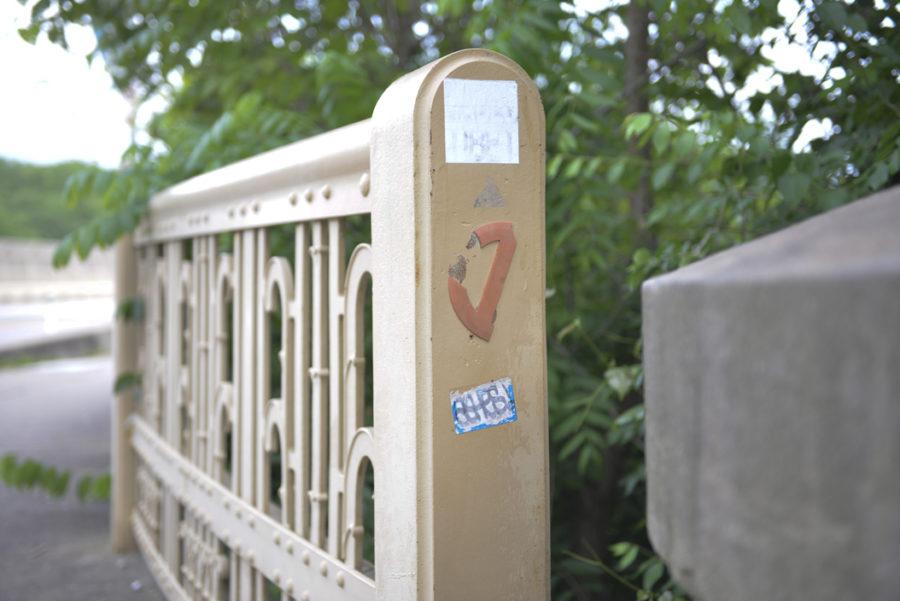Taking a stroll down a sidewalk on Centre Avenue, you might glance over at a utility box on the corner and if you’re lucky, you might see — attached to it with a generous amount of glue — the kind of protractor from high school geometry class.
And this doesn’t only happen in Friendship — these protractors are spread throughout the neighborhoods of Pittsburgh, and though they are most concentrated in Polish Hill, they’ve been spotted all over the city.
Eric Lidji, a University of Pittsburgh alum, first noticed the protractors back in 2011. Lidji and his friends saw them popping up throughout the area shortly after he’d moved from the East End to Squirrel Hill.
The strange nature of the protractors led Lidji and his friends to wonder if they held any meaning, so Lidji decided that the first step to finding the answer would be to make a map of the protractors’ locations.
He chronicled the journey of finding them on his blog for a few years — from 2011 through 2013 — and made the map accessible to the public.
There turned out to be hundreds of them — close to 500, judging by the numbers written on the protractors themselves.
But the map Lidji made shows no hidden shape. It appears there is no grand code encrypted in the protractors’ locations. They just exist as small markers throughout the city — which, once noticed, become hard to miss.
The abundance of protractors and their seemingly planned out locations leave people not only searching for a purpose behind their sudden appearance, but for who would take the time to place them — the endeavor of gluing them around the city had to be an awful lot of work.
As for why someone used protractors specifically, as opposed to some other small, easily glueable object, some people believe that the arc of the protractor mirrors the appearance of a bridge — fitting for Pittsburgh.
But Lidji has a simpler explanation to offer.
“Maybe the person just came across a lot of protractors,” Lidji said. “Possibly somewhere like Creative Reuse.”
In fact, Ashley Andrews from Creative Reuse seemed to confirm this when The Pitt News looked into Lidji’s theory.
“Well the interesting thing is that we don’t exactly have like cut and dry records of what we sell because we’re a reuse store, but I can tell you that it is highly likely that in 2011 we probably did have like 1000 protractors in a large bucket and then perhaps all of those protractors were gone one day — so just saying that maybe that’s true,” Andrews said.

And although the protractors are all numbered and sometimes line up in spurts, they don’t follow one continuous path through the city.
There are runs of protractors where someone looking for them would clearly be following a path, but then it could jump to a different number entirely, and a new path could start in an entirely different part of town. The original theory of a connecting thread between the protractors may be gone, but this doesn’t mean there aren’t other cool things to find while looking for them.
Lidji’s personal favorite protractor is located in Lawrenceville, by 33rd Street. You have to go under the railroad track to get there, but down behind the tracks is not only the protractor, but a bunch of art, including the bottom of a paint can that has been similarly glued and then drawn on. Lidji says there’s a whole mural of artwork down there.
Looking for the protractors can be a largely rewarding search no matter the goal, as Lidji has found over the past few years.
Dr. Nicholas Coles, an English professor at Pitt, teaches a course called Secret Pittsburgh — an English literature course that connects “secret” spaces in Pittsburgh to their larger historical contexts through readings and field trips.
In addition to visiting secret sites as a class, the students embarked on smaller, individual projects. And one of Coles’s students — Cheyenne Hudson — centered her project around the mysterious protractors popping up throughout the city.
“Someone might have a favorite coffee shop or ghost town or community garden or something, but for Cheyenne, she got into it enough. I’ve never even noticed these protractors — she had actually found something secret about Pittsburgh. This is a bit mysterious,” Coles said.
Hudson went so far as to bring her mother out to Pittsburgh from West Virginia to spend an entire day hunting protractors, with a goal of finding at least 50.
“Some of them get taken down, so it was not easy. They got stuck at 47, but in the end, they did it,” Coles said.

Cheyenne’s final essay for the class was an account of what they found on the hunt.
“There are official versions of this — like the bulls in Chicago or the dinosaurs that popped up in Pittsburgh — but this is an unofficial, underground version of that, and it seems to cross over into tagging culture,” Coles said.
And after years of rumination, Lidji also believes the whole thing could just be an art project of sorts. The more he searched and found, the less he felt like there was a grand plan behind the whole thing, and the more it looked like a unique sort of graffiti tag.
The slight elevation of the protractors puts a twist on normal graffiti. Unlike a usual tag, the protractors stick out physically.
“The protractors have a little bit of relief and color, taking what would be a normal graffiti tag and making it special,” Lidji said.
The protractors have enough of an air of mystery to them that they keep people intrigued, and hunting for them even seems to be a hobby for some. For Lidji, he simply said that they’re fun to find.
Lidji says that even though he stopped searching for more protractors around 2013 — about four years ago — he still gets calls and emails about them every spring.
“It’s clear that people like to explore cities,” Lidji said. “And Pittsburgh is a really good city for exploring. It will reward your efforts. And this is a small appetizer to a much larger meal.”

As the weather grows warmer, the search for protractors is a great way to get out and move through the city on foot or bike and to potentially find something new.
However, the protractors may not be permanent.
Even as Lidji was still looking for them, some were disappearing, whether they were taken down with only the outline of glue remaining or were painted over, the protractor’s form still visible underneath the fresh coloring.
While Lidji doesn’t seem to have any plans to go hunting for protractors again anytime soon, he talks about what it might be like to go back to the spots where the protractors were found to see what has changed.
“It becomes a way of watching the city change,” Lidji said. “You could do it without the protractors, but it’s a lot more fun with them.”


